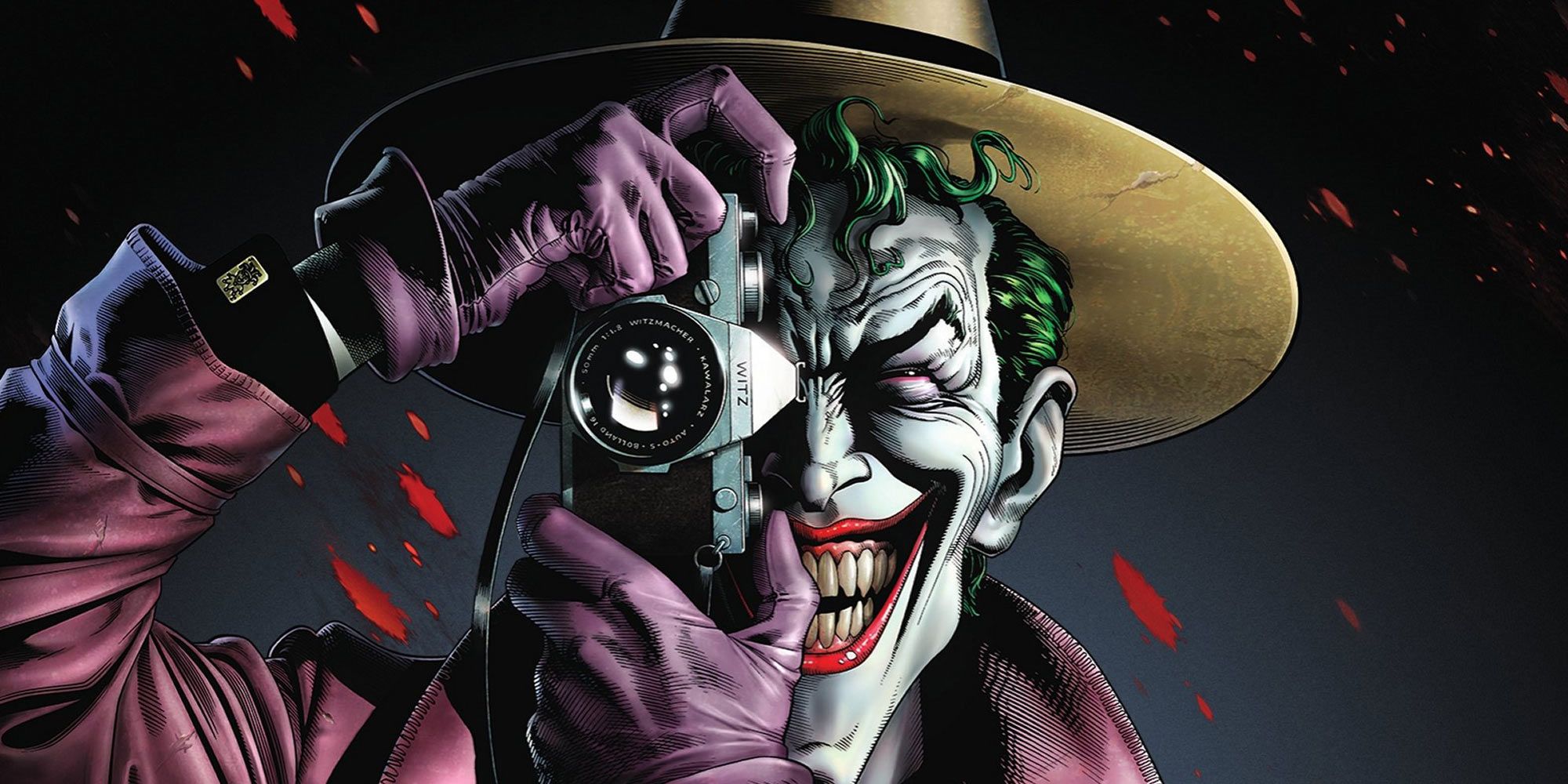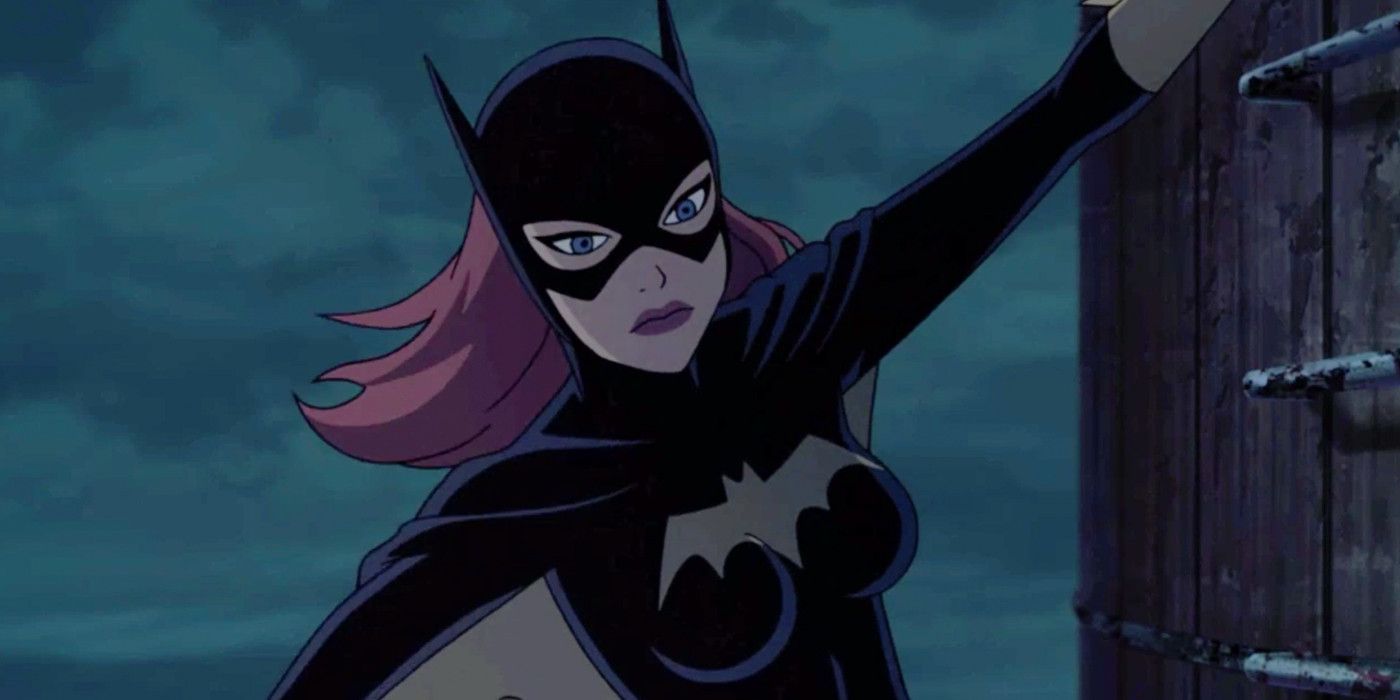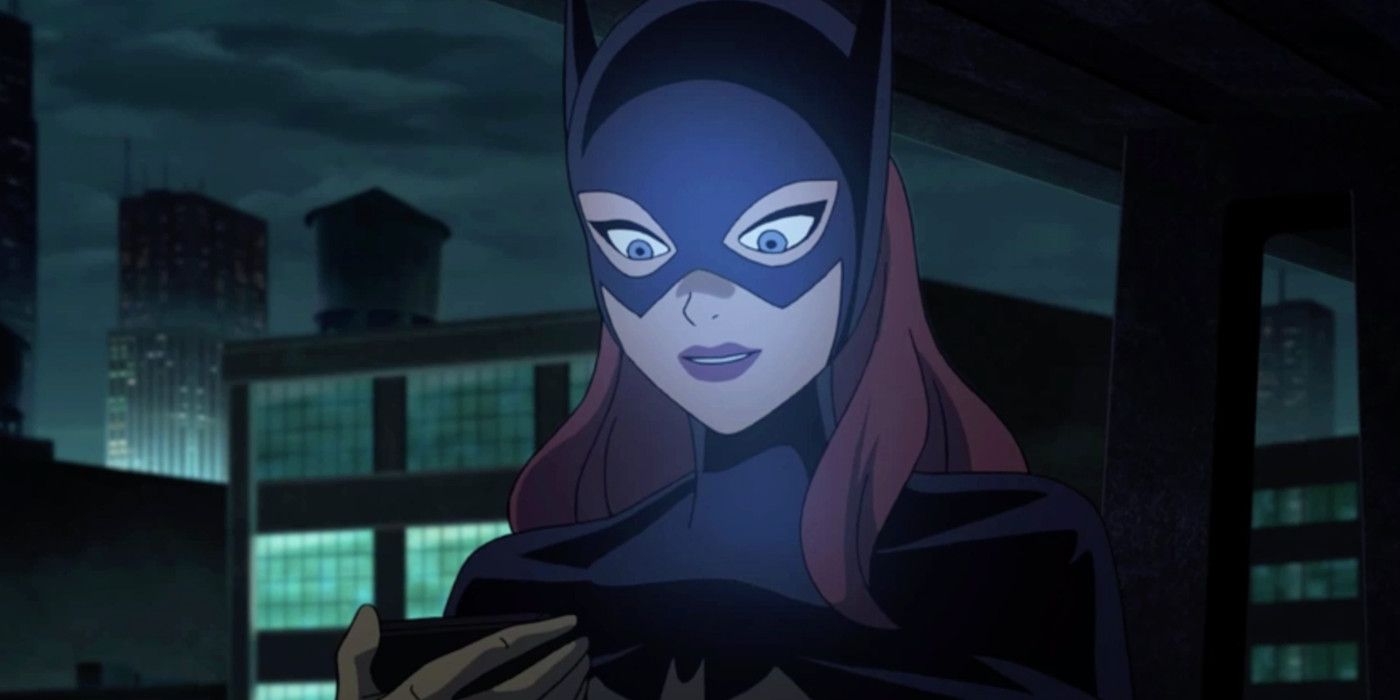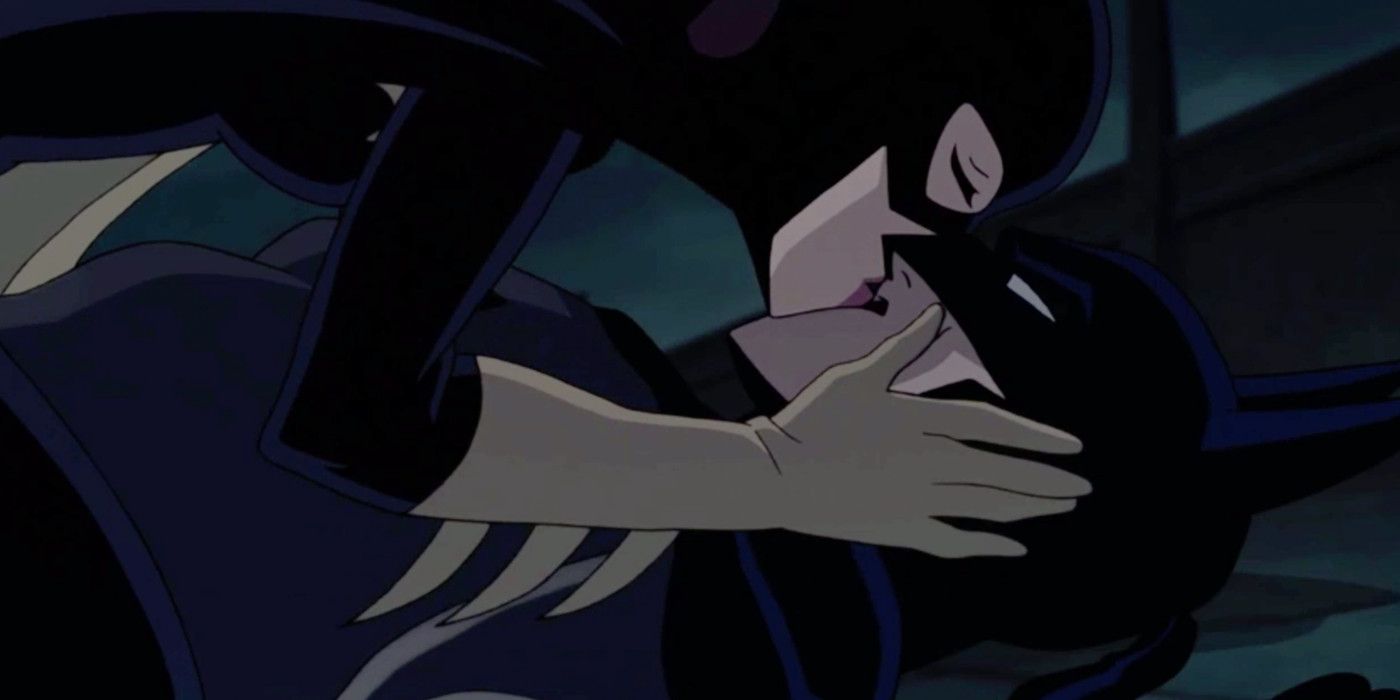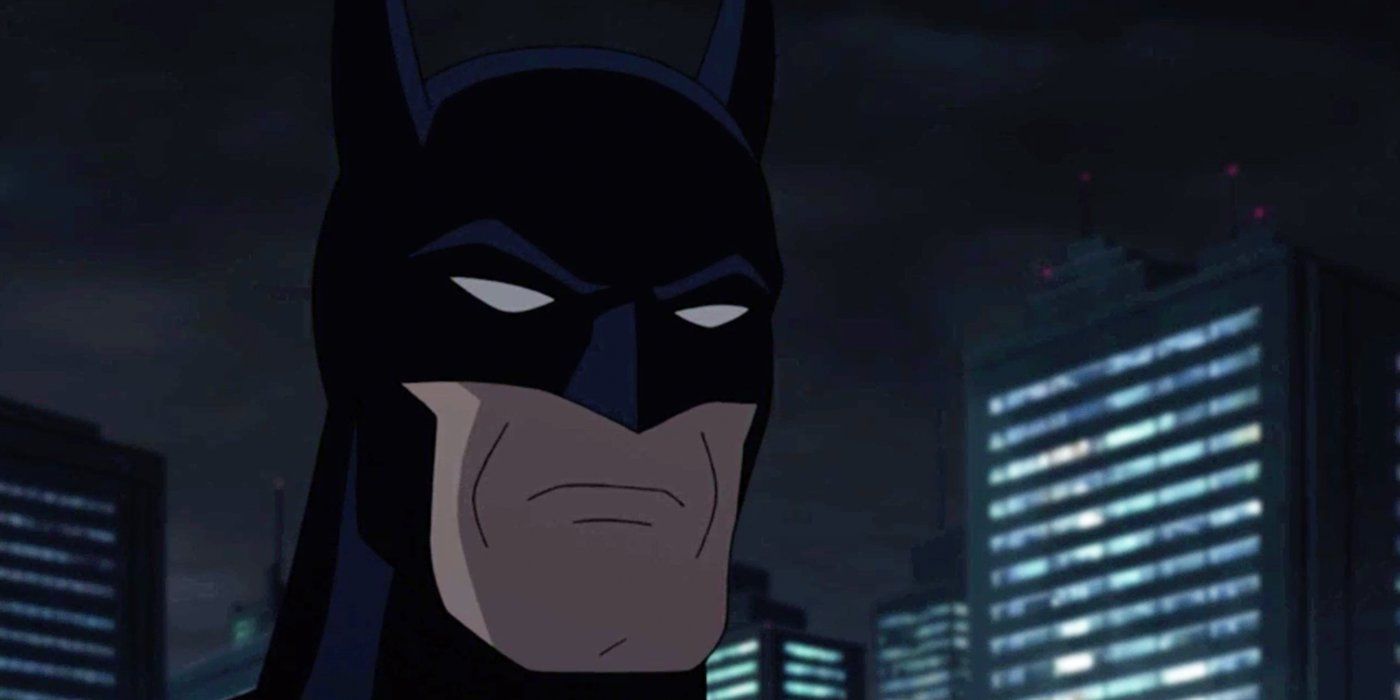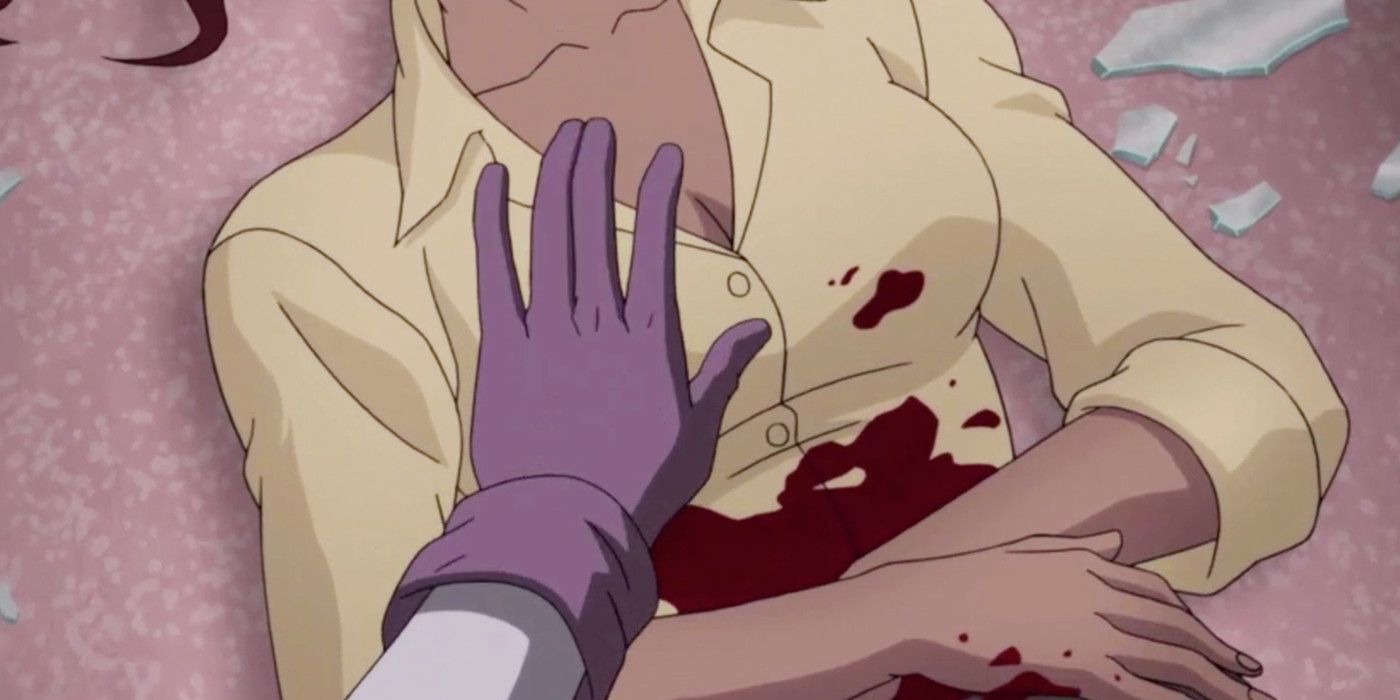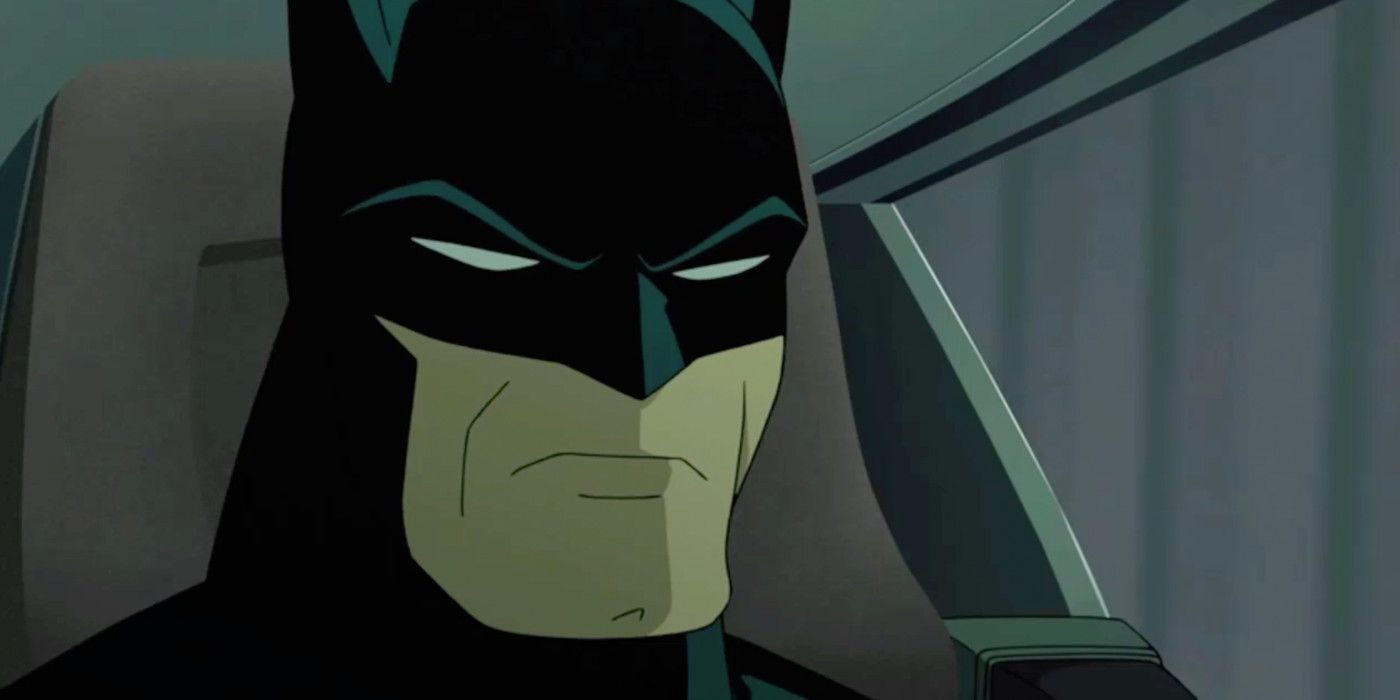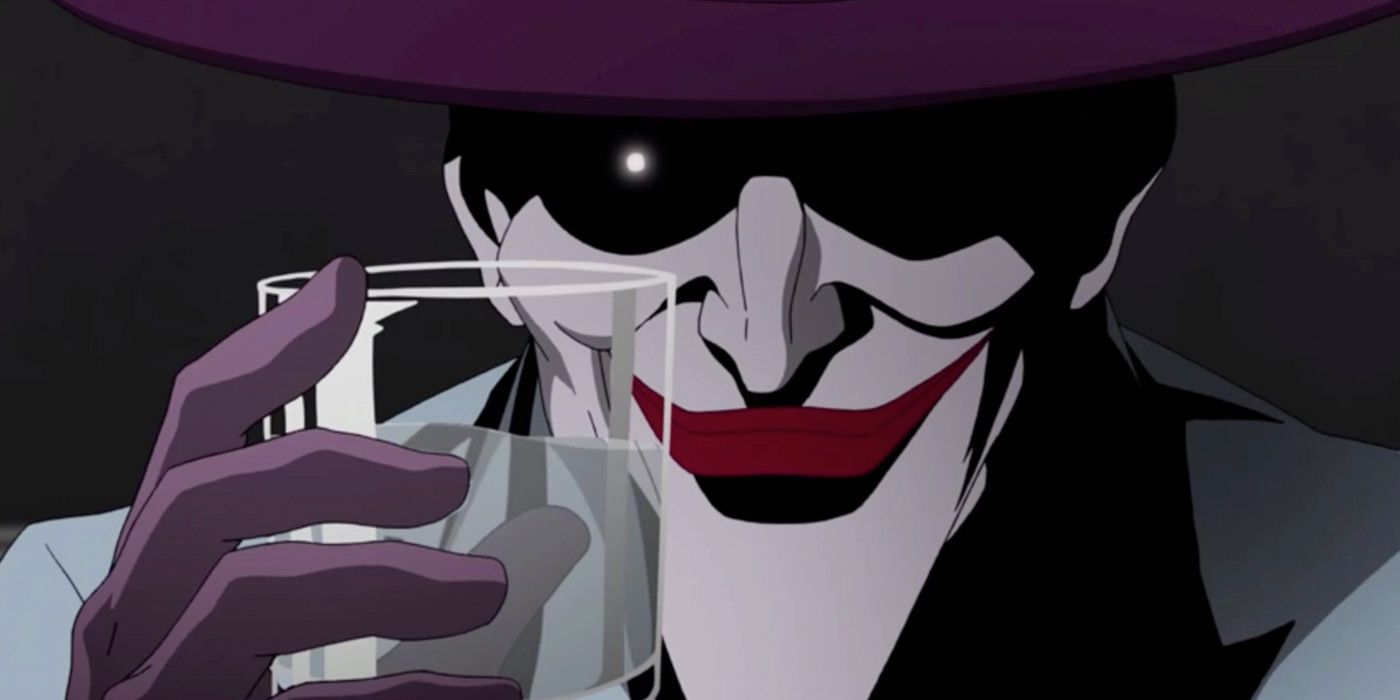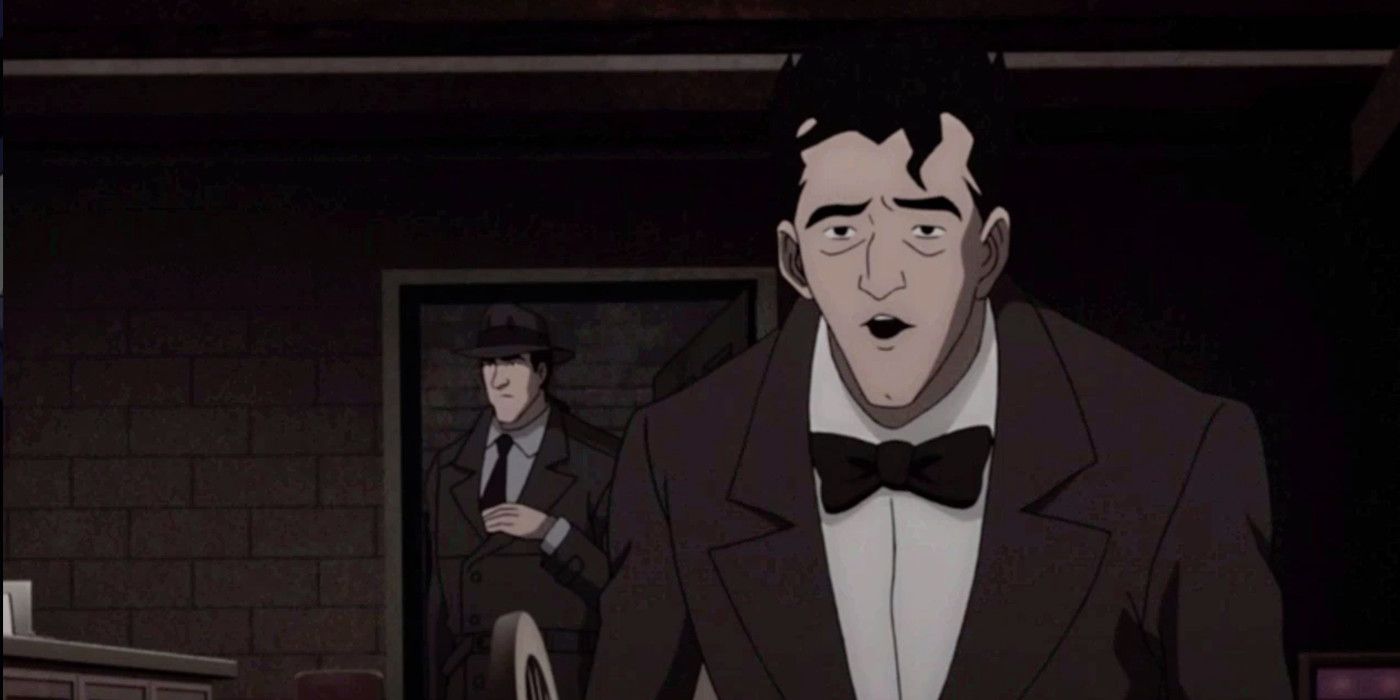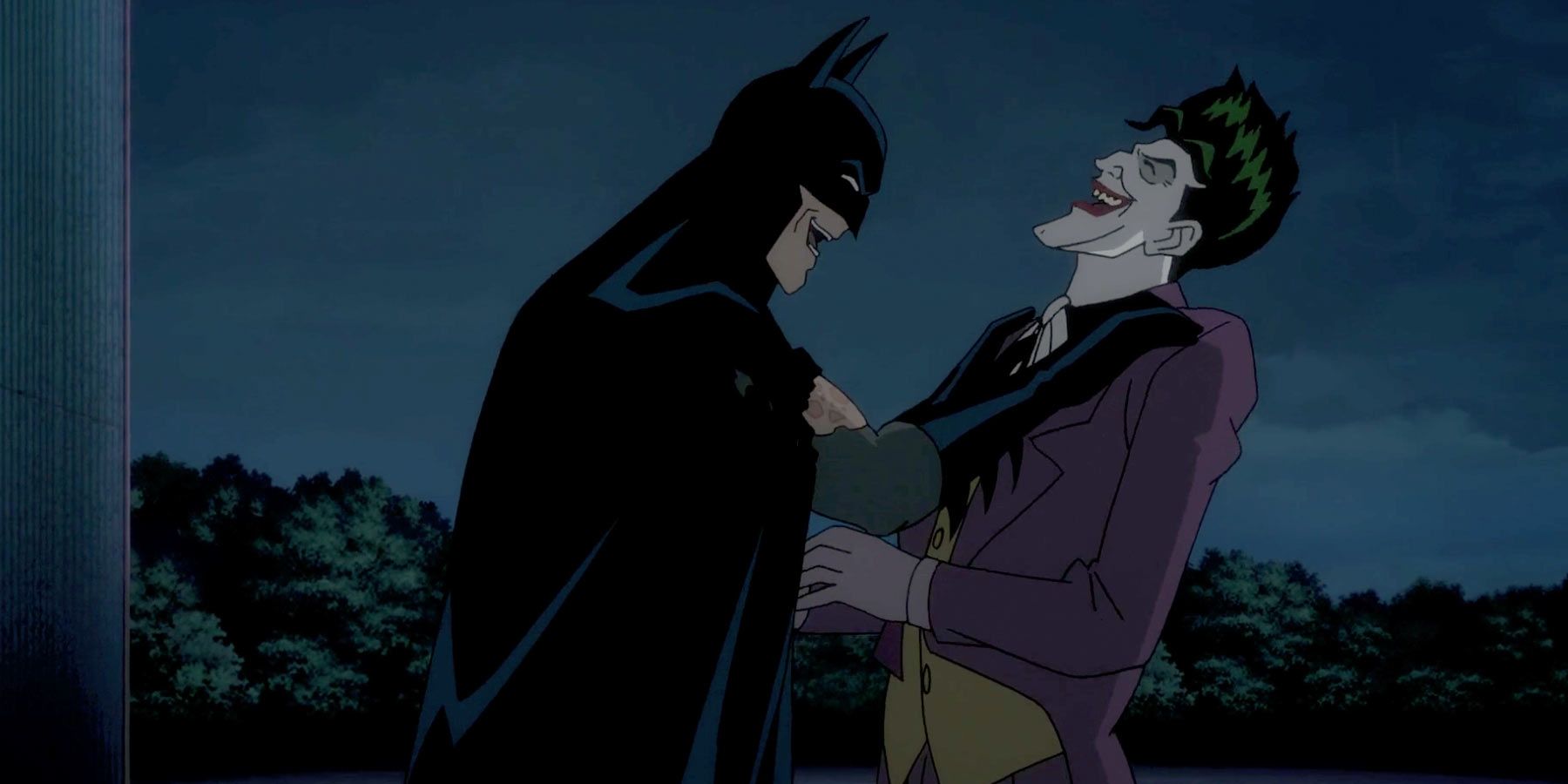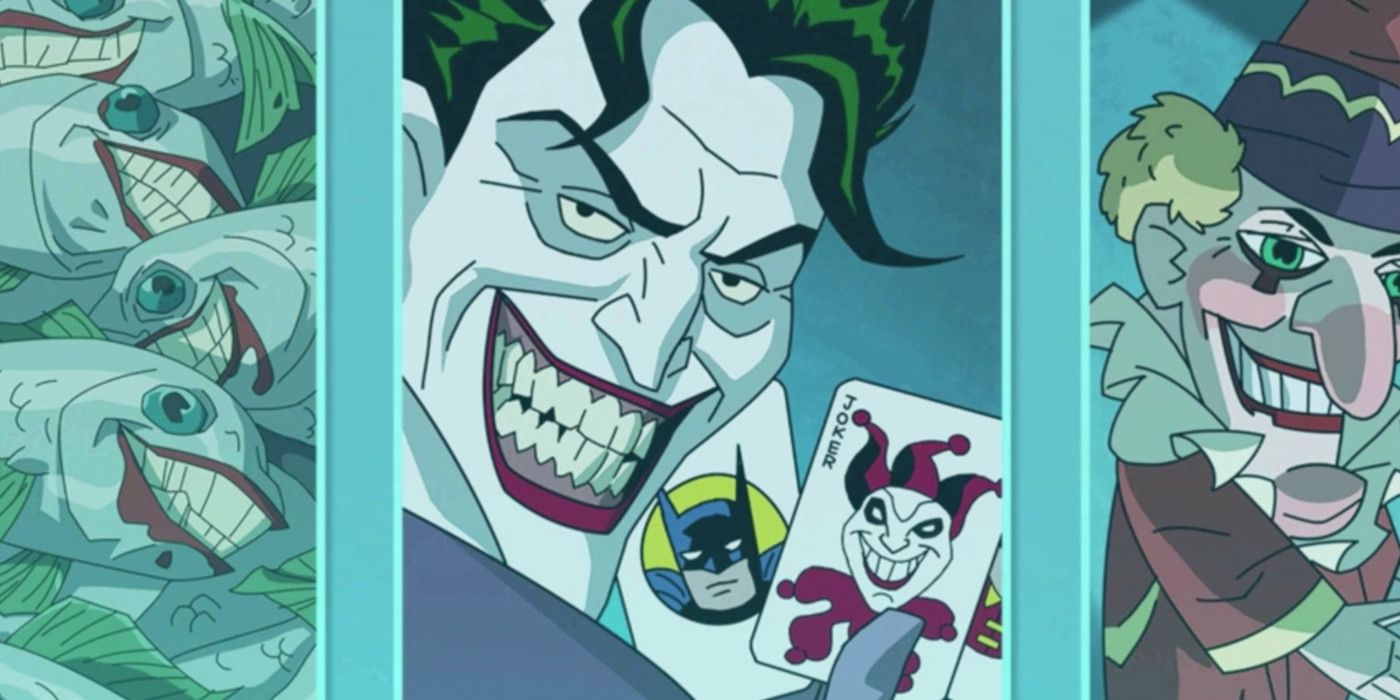After it debuted in theaters on July 26, the R-rated "Batman: The Killing Joke" animated movie arguably incited more controversy than the original graphic novel by Alan Moore and Brian Bolland did in 1988.
In the now-infamous comic book storyline from decades past, the Joker ups the ante in his feud with Batman and terrorizes two of the Dark Knight's allies. He gets the drop on Barbara Gordon, AKA Batgirl, and shoots her in the stomach, crippling her. He then he kidnaps her father, Commissioner Jim Gordon, and publicly degrades him in an amusement park in an effort to drive him insane. Both Gordons are stripped naked during their ordeals, and it's ambiguous as to whether or not the Joker raped Batgirl.
REVIEW: Otherwise Solid "Batman: The Killing Joke" Falls Apart in Handling of Batgirl
The dark tale was so well-written and illustrated that it won an Eisner Award, but fans were aghast at the Gordons' unsettling victimization, especially Batgirl's. The animated film based on the same story attempted to capture the comic's dramatic resonance, but the results were a mixed -- and largely disappointing -- bag. Consequently, "Batman: The Killing Joke's" theatrical release had few bright spots within an otherwise dull story.
Many fans remain divided on both the original comic and its animated retelling, so we decided to examine in greater detail what the movie got right, while not pulling any punches about what it didn't.
11 The Unnecessary Batgirl Subplot
Screenwriter Brian Azzarello, himself a long-time comic book scribe, added about 30 minutes of a boring, brand new Batgirl-centric story tacked on to the beginning of "The Killing Joke" that's nowhere to be found in the graphic novel. The addition isn't connected to the larger narrative, so it's basically a waste of time. The core story examines the dynamic between Batman and the Joker, but viewers don't get there until after slogging through scene after scene of Batgirl fighting pointless bad guys and whining about her unhealthy love life -- none of which has anything to do with the main plot.
Azzarello's decision to pad out the movie's runtime is understandable. The graphic novel, in its original release, is a quick read at 64 pages that doesn't have quite enough material to support a feature-length film. Within its pages, Batgirl is merely a supporting character whose only purpose is to be brutalized canon-fodder. Azzarello likely wanted to give her more to do on screen and make things long enough for theatrical release. It's too bad he failed in his execution and muddled the storyline rather than making Batgirl a more important character in the overall narrative.
10 Batgirl's Poor Characterization
And as for the aforementioned Batgirl subplot -- it doesn't do the character any favors. In pop culture, Batgirl's famous for being a brainy, sensible person who's guided by logic, but in the movie, her loins and insecurities make her decisions for her, and her common sense takes a vacation. She flirts with a homicidal mobster who plays mind games, and she commits one of the skeeviest acts in animated superhero history: she hooks up with Batman, who's basically her surrogate father, if not her uncle.
Batgirl makes toxic choices that, frankly, should be beneath her. Even at her youngest and most inexperienced -- in crimefighting and in life in general -- Batgirl wouldn't be doing things like this. It's out-of-character and downright self-destructive. Why would she humor a sleazy criminal who makes passes at her, and why on Earth would be playing naked rooftop rodeo with Batman, of all people? Speaking of...
9 Batgirl and Batman's Hook-Up
Batman and Batgirl's hook-up is uncomfortable to see because it verges on incest. Bruce Wayne is so much older than Barbara Gordon that he should never see her as anything more than a little girl, and he's best friends with her father. Yes, May-December relationships do exist, and older men and younger women get together all the time, but Batman and Batgirl is strange because they're family. Batgirl's like one of Batman's Robins, a surrogate daughter who helps him beat people up, and grown men shouldn't boink their own kids. Yuck.
RELATED: How "Batman: The Killing Joke" Could Have Avoided Objectifying Batgirl in All-New Ways
The storytelling decision makes Batman look bad in his own film. Humping Batgirl should weird him out just as much as viewers were weirded out by watching it. DC has portrayed Batman and Batgirl relationships before, perhaps most famously in an episode of "Batman Beyond," but their union has always seemed odd no matter where it's popped up.
8 Batman's Characterization, Or Lack Thereof
Between the movie's 30-minute Batgirl prologue and its strong emphasis on the Joker as the main villain, Batman gets overshadowed. Since "The Killing Joke's" debut, the Joker and Batgirl portrayals have dominated most conversations, for better or worse, and the only time Batman himself comes up is when the topic changes to uncomfortable sexual situations. Beyond that, Batman does nothing memorable.
Sure, he investigates crimes and kicks and punches bad guys, but that's basically the same thing he does in any random episode of one of his half-hour kids' cartoon series. Given its importance in the Batman character's history, the "Killing Joke" film should've attempted to dive deep into Batman's psyche in a meaningful way. Instead of devoting so much time to an extraneous Batgirl subplot, Warner Bros. should've given the onscreen real estate to Batman. They wasted a great opportunity to display Batman's magnificence as one of the world's most popular superheroes.
7 Negative Sexuality
The film's sexual energy is noticeably harsh, and it's all directed at Batgirl. Multiple criminals sexually harass her, and after she has sex with Batman, he gives her the cold shoulder. To be fair, it's possible that Azzarello was just trying to be realistic. After all, female police officers deal with uncomfortable, sexually charged energy from male perpetrators, so why wouldn't female superheroes? And Batman's emotional unavailability and repression is legendary. He's not great at romantic relationships anyway, so why would he suddenly be better with Batgirl?
But in the "Killing Joke," the realism just heightens Batgirl's victimization. Most viewers know she's going to be crippled and stripped naked because it's in the graphic novel, but the film ramps up the abuse for no valid reason. In one scene, the camera lingers on her butt when she jogs, and in another, the Joker's hand lingers over her right breast after he incapacitates her. Neither of these things happen in the comic, and in the movie it's not only unnecessary, it's overkill.
6 The Lackluster Animation Style
"The Killing Joke's" animation style didn't do it any favors. The movie's "look," so to speak, didn't match the mature subject matter, and it wasn't executed well either. While a beautiful aesthetic doesn't make up for deficient storytelling, perhaps audiences would've liked the film slightly better if the presentation had been improved.
It's obvious that Warner Bros. Animation was shooting for the fresh, clean line work that Bruce Timm made iconic with "Batman: The Animated Series" in the '90s. He started a beloved visual style that's influenced the bulk of DC's animated fare ever since. However, that look has become synonymous with all-ages material, so it seems bizarrely out-of-place in an adult movie with psychological, physical, and sexual abuse. Had Warner Bros. approached the project with more "Heavy Metal" visual sensibilities, they might have made a movie for grown-ups that actually looked like a movie for grown-ups.
To make matters worse, the "Killing Joke's" family friendly Bruce Timm-flavored trappings don't even look well done. The animation is stiff and devoid of the crisp, kinetic energy that Warner Bros. is famous for with its DC Comics-based endeavors. In some scenes, the movie looks almost like a glorified Flash animation.
5 When the Film Sticks to the Source Material
The movie's at its best when it follows the graphic novel, so it's a shame that Warner Bros. couldn't have just released a shorter film. If they'd ditched the horrid "Batgirl: Sex in the City" introduction, the movie probably would've received better reviews.
The story starts off slowly with unnecessary, badly realized angst, but the pacing picks up sharply the second Batman comes to Arkham Asylum to visit the Joker, which is the very first scene in the graphic novel. From there, the cinematic "Killing Joke" hits its stride as the Joker-Batman story it was meant to be. Suddenly, the plot develops a concrete beginning, middle and end, and characters become more interesting.
Motivations grow clearer and more sensible. Batman wants to rescue Commissioner Gordon from Joker, and Joker wants to hurt Batman by torturing his buddies. That's an improvement over the murky goings-on in the previous story arc. That tale just had Batgirl wanting to apprehend a lame junior mobster and pining over Batman, just so the writing team could give her something substantial to do in a story that's not primarily about her to begin with.
4 The Lame Joker Origin
The Joker's origin story is surprisingly lame, and this is probably the one bad aspect of the movie that the creative team behind the film is not responsible for. The theatrical version just highlights how the graphic novel's "classic" Joker origin didn't honor the character's twisted greatness. One of the best supervillains of all time needs a better backstory than this one, which depicts him as a harmless, failed engineer/aspiring comedian who had "one bad day" that sent him over the edge.
That origin rings false. It presents the Joker as a non-threatening, unassuming man who gets a complete personality makeover after the death of his wife and child, a botched robbery attempt, and a dousing in dangerous, mind- and body-altering chemicals. Yes indeed, those experiences can affect someone in profound ways, but honestly, anyone who's as psychotic as the Joker had to have been at least partially deranged and disturbed before all that happened. "One bad day" doesn't change a man that completely, not by itself; it just enhances or awakens something that was already there.
3 The Talented Mark Hamill and Tara Strong
Mark Hamill (The Joker) and Tara Strong (Batgirl) are the highlights of the voice cast, though Hamill gets a boost in a way Strong doesn't. His character and voice don't debut until after the Batgirl prologue mess ends, so by the time Hamill's heard, the audience is so happy to hear him that he sounds better than he would have if they'd seen the Joker from the beginning. Once Hamill's Joker speaks, it's a sign that this is a proper Batman story and a welcome relief from the snoozefest that came prior.
RELATED: "Batman: The Killing Joke" Cast Bring 'Really Dark' Adaptation to Life
Strong's performance as Batgirl exemplifies her versatility as a voice actress. One would never know that this was the same woman who currently voices Harley Quinn and "My Little Pony: Friendship is Magic's" Twilight Sparkle. In the "Killing Joke," her vocal tones are lower, more even, and "real," as opposed to the higher-pitched bombastic silliness she's required to bring to many of her other roles. Here, she exhibits a maturity and grounded nature in her voice, making it all the more disappointing she wasn't given better dramatic material to work with.
2 The Strange Ending
When Batman puts his hands on the Joker's shoulders and starts laughing at the supervillain's joke before the end credits roll, it's one of the movie's biggest "what the hell?" moments. After all the horrible, evil things the Joker had done to Commissioner Gordon and Batgirl, it would've made more sense for Batman to smash his face in, not relax for a funny story. Even though that's the point of the Joker and Batman's relationship -- that their bond is disturbing and unhealthy -- that scene flat out doesn't work properly on screen.
In the movie's defense, this is almost exactly how this exchange plays out in the original source material. So even if Warner Bros. didn't exactly mess up, it's perhaps an example of something that doesn't translate well from page to screen. This ending was poignant in the comic, but it seems nonsensical in the movie. Maybe it would've worked better if the directing had played up both the Joker's and Batman's lunacy earlier, throughout the entire movie. Only two crazy men would've acted this way after everything that had transpired, but the movie only showcased the Joker's craziness, not Batman's. While we mentioned how well the movie works when sticking to the source material, the ending is one spot where it definitely should have gone its own way rather than being slavish to what's on the page.
1 Impressive Box Office Returns
In Hollywood, profitable entertainment matters more than quality entertainment, and the film earned more than $3 million in a limited theatrical release, an impressive feat for a small scale American animated film aimed at adults.
It's good news for Warner Bros. Animation for multiple reasons. More money means more people get to keep their jobs, so the studio will definitely produce more animated films in the future, likely with bigger budgets. It also further solidifies Warner's stellar reputation as a successful animation house for DC Comics properties.
The box office reception also bodes well for adult-oriented animation in general. "Sausage Party," another R-rated cartoon for grown-ups, has earned more $114 million worldwide (with $93 million coming in the U.S. alone) on a $19 million budget in its first month. With two successful, R-rated animated features arriving in short order in 2016, perhaps the U.S. is experiencing the dawn of a new, more receptive audience for adult animation.
Where do you think "Batman: The Killing Joke" succeeded and failed? Let us know in the comments!

